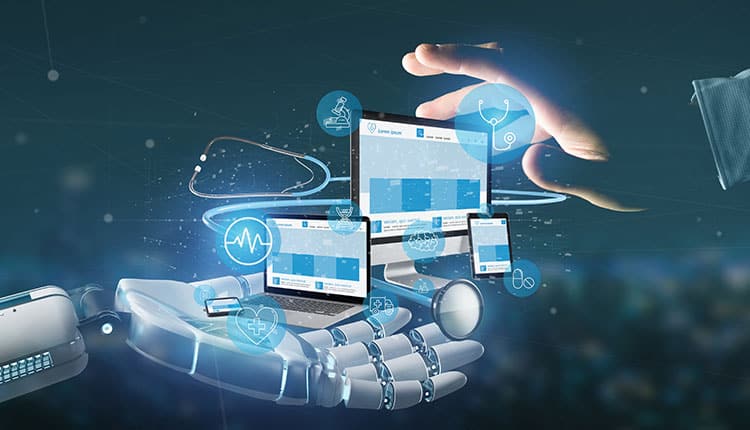By Sriram Jeyabharathi, Co-Founder; Chief Product and Operating Officer, OpenTurf Technologies
Introduction
Understanding Natural Language is hard and despite recent advances in technology, it’s still not easy to build systems around Natural Language Processing (NLP). Contrary to what enthusiasts like to believe, NLP systems are far away from reaching the maturity depicted in the movie ‘Her’. In fact, Google firing an engineer who claimed its AI technology reaching sentient is a realization that much needs to be done in the domain of NLP.
That said, evolving technology is helping build smarter NLP systems that are more dynamic and mature in their functional and operational capabilities. Below are the five key trends that we believe would play a critical role in shaping the future of NLP systems and help the industry to make giant strides in its appeal and popularity among key stakeholders.
1) Intent Less AI Assistants
RASA, one of the most used platforms for building conversational AI assistants, has written
about the five levels of AI assistants. The summary is nicely captured below. While we are far away from reaching level 5 of conversational AI assistants, the industry is progressing to
achieve level 3 and Level 4 proficiency. This shift entails the participation of all stakeholders within the enterprise and the primary challenge related to this progression is to understand user intents accurately.
NLU systems needed to have a large training sample of user intents to effectively craft a
response and most of the time these intents were added to the system without understanding the content. However, with a large sample of training data available of human-to-human conversations, the pre-training of intents will take a secondary position and conversational AI development platforms are moving toward making user intent-driven training a secondary factor, and the responses are being understood from what the user is saying.
2) Smarter Service Desk Responses
When you contact a service desk today with an issue, you typically get a response in the form of; a ticket that has been opened and you’ll get a response within a certain time frame. However, research indicates that most of the tickets are repetitive in nature and can be closed without intervention given the organizational knowledge is mined properly. NLU can be of immense help here and can be used to resolve the matter quickly without interventions. The system will go through prior interactions based on the subject and content of the mail, the category of the ticket, and after analysis, the final resolution mechanism can be decided. The very first response of the NLP system will be to chalk out a clear action plan to the user and then track the subsequent email follow-up with a virtual assistant who will help resolve the user’s problem immediately. In this manner, response emails will get smarter and improve the customer’s experience with the brand.
3) Improvements in enterprise search
While the jury is still out on which one of the Work from Home or Work from Office models is more effective, enterprises are likely to embrace the full potential of the hybrid model in the coming times. In the hybrid work model, the main thrust of the organization is to improve employees; productivity and invent ways to keep employees engaged. Enterprises are also revamping their internal IT systems to resolve any kind of employee queries in a more natural and empathetic manner – How about introducing the simplicity of a Google-like search to answer the queries of employees. The key to achieving this is to harness the internal systems of companies and break the silos to ensure employees find the answers to their queries by using natural language in the shortest possible time.
4) Enterprise Experimenting NLG
Natural language generation (NLG) is the use of AI to produce narratives from a dataset. NLG works on a combination of 5 stages. Initially, the data is filtered by identifying the main topics that are to be included at the end of the process. Machine learning is used for understanding and interpreting data. Based on the type of data interpreted, a documented plan is created. Gathering the relevant sentences to summarise the topic. To produce a natural-sounding text, the sentences are rewritten in a grammatically correct context. Based on the user’s selection, the final output is generated. Enterprises often create repetitive content – be it a product note, views on emerging topics, quarterly financial reports, or press releases. NLG will find its use in generating such repetitive content and the role of a human copywriter will be to give a special touch to the tone and tenor of the brand communication. In coming times, more and more regular content will come from NLG with the manual intervention remaining limited to tweaking content in accordance with the requirements of the organization.
5) Brand’s Immersive Presence in Voice-driven Navigation Assistants
The voice control technology is used in a number of different segments of products and services. Especially in cars, the technology is used to help achieve hand-free capabilities as drivers rely on an in-car voice assistant to accomplish many functions. Some of the primary tasks that can be accomplished using voice control technology include setting navigation. receiving hands-free calls, placing orders at restaurants, controlling in-car temperatures, windshield wiper operation, door locks, and so on. In fact, don’t be surprised if tomorrow your car’s voice assistant notifies you about your favorite restaurant on your destination route that is offering an attractive discount on your favorite cuisine! Brands are going to immerse themselves in every part of your journey and you as a customer will definitely enjoy the experience.

